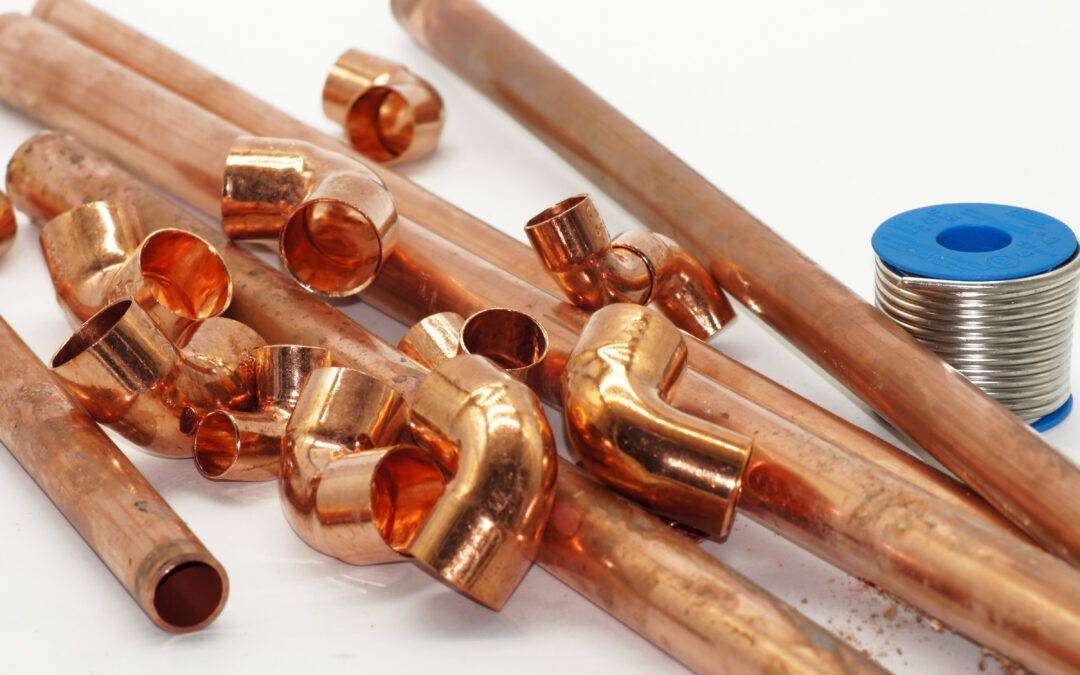When it comes to upgrading your home’s plumbing system, one of the most crucial decisions you’ll face is selecting the right type of pipes to suit your specific needs. Material, durability, and cost are essential factors to consider, as the choice can greatly impact your system’s performance, longevity, environmental impact, and return on investment. As your Redwood City, CA plumbing expert, Shoreway Plumbing is here to help you navigate through this critical decision-making process and provide essential insights into the different types of pipe materials on the market.
In this comprehensive guide, we will discuss several pipe materials in detail, weighing their advantages and disadvantages, to help you make an informed decision when upgrading your plumbing system.
This article will delve into the specific properties of each material, evaluate their potential applications, examine installation and maintenance factors, and assess their overall costs and suitability for various plumbing system upgrade projects.
Copper Pipes: The Long-Lasting Classic Choice
Copper has been a popular plumbing material for decades, thanks to its durability, longevity, and reliability. It offers exceptional resistance to corrosion and is known for its ability to withstand high water pressures and temperatures. Additionally, copper pipes can be recycled, making them an environmentally friendly option. However, copper’s primary drawback is its high cost compared to other materials, as well as the labor-intensive soldering process required for installation.
Pros:
– Durable and resistant to corrosion
– Long lifespan (50+ years)
– Withstands high water pressure and temperature
– Recyclable
Cons:
– High cost
– Requires soldering for installation
PVC Pipes: The Affordable, Low-Maintenance Choice
PVC pipes are lightweight, easy to install, and relatively low-cost, making them an increasingly popular choice for many homeowners. They work well for drainage, waste, and venting systems, as they resist corrosion and do not require special tools for installation. However, PVC is not recommended for use in high-temperature applications or areas exposed to direct sunlight, as it may become brittle and prone to cracking over time.
Pros:
– Lightweight and easy to install
– Low cost
– Corrosion-resistant
Cons:
– May become brittle with exposure to sunlight or high temperatures
– Not suitable for hot water applications
CPVC Pipes: The Heat-Resistant PVC Alternative
CPVC pipes are a variation of traditional PVC pipes, with added chlorine to enhance their strength and temperature resistance. Due to their increased durability, CPVC pipes can be used for both hot and cold water supply lines. Additionally, they are cost-effective and easy to install, similar to PVC pipes. However, their primary disadvantages include potential cracking over time and limited compatibility with other pipe materials, necessitating special fittings.
Pros:
– Enhanced strength and temperature resistance compared to PVC pipes
– Suitable for hot and cold water supply lines
– Cost-effective and easy to install
Cons:
– Can crack over time
– Requires special fittings when connecting to other pipe materials
PEX Pipes: The Flexible and Easy-to-Install Choice
PEX pipes are made from cross-linked polyethylene, which gives them increased flexibility and resistance to both freezing temperatures and corrosion. These pipes are highly versatile and can be used for various applications, including water supply lines, radiant heating systems, and ice makers. PEX pipes are notable for their quick installation process, requiring no soldering or gluing, and their compatibility with copper and CPVC pipes using specialized fittings. However, PEX pipes cannot be exposed to direct sunlight and may not be suitable for outdoor use.
Pros:
– Flexible and freeze-resistant
– Quick and easy installation
– Compatible with copper and CPVC using special fittings
Cons:
– Sensitive to sunlight exposure
– May not be suitable for outdoor applications
ABS Pipes: The Durable and Impact-Resistant Choice
ABS pipes, made from acrylonitrile butadiene styrene, offer a high level of durability and impact resistance, similar to PVC pipes. They are often used in venting and drainage applications and can be particularly beneficial in colder climates due to their resistance to freezing temperatures. However, ABS pipes may not be approved for use in all jurisdictions, so it is essential to check local building codes before considering this material.
Pros:
– Durable and impact-resistant
– Resistant to freezing temperatures
– Suitable for venting and drainage applications
Cons:
– May not be approved in all jurisdictions
Galvanized Steel Pipes: The Rugged, Outdated Choice
Galvanized steel pipes, once a popular material choice, have become increasingly outdated due to their vulnerability to corrosion, lead contamination, and low water pressure. Today, experts typically recommend replacement rather than installation of galvanized pipes, as more modern materials offer superior performance and longevity.
Pros:
– Rugged and durable
Cons:
– Prone to corrosion and lead contamination
– Can cause low water pressure
– Better alternatives are available
Conclusion
Selecting the right pipe material for your plumbing system upgrade can significantly impact the performance, longevity, and value of your investment. By understanding the advantages and disadvantages of different pipe materials, you’ll be well-equipped to make an educated decision tailored to your specific needs.
If you’re planning a plumbing system upgrade for your Redwood City, CA home, or need professional consultation on choosing appropriate pipe material, look no further than Shoreway Plumbing. Visit our website to learn more about our services and schedule an appointment with one of our experienced technicians.


